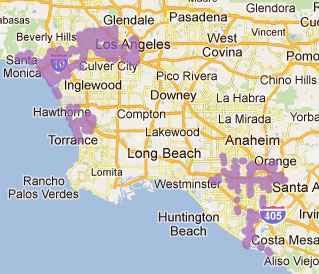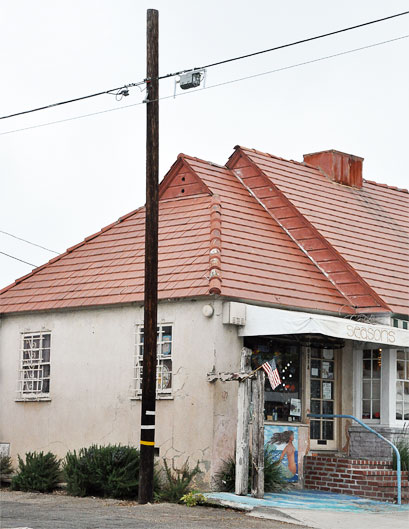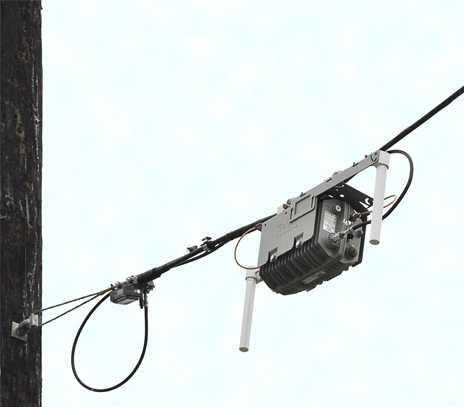Coming to (or already arrived at) a utility pole really near you in Southern California… Time Warner’s new WiFi system!
With $15M of new strand-mounted WiFi access point equipment supplied by BelAir Networks, this new network is apparently intended to provided wide area WiFi coverage in TWC’s service areas.
Presently, TWC’s SoCal deployment is spotty at best, but this is just the beginning:
 So, you’d like to see what the BelAir wireless access points look like installed in SoCal? Here are two photos taken in Santa Monica by yours truly:
So, you’d like to see what the BelAir wireless access points look like installed in SoCal? Here are two photos taken in Santa Monica by yours truly:


Belair Networks web site points to an interesting piece on the new network posted at FierceWireless: it’s worth reading.
Of course, a few tiny technicalities pop into my head with this deployment.
First, since this is not a cable service, and this is not a personal wireless service, under what regulatory authority does a statewide cable TV franchisee (like, for example, Time Warner) install these wireless access points in the public right-of-way?
Another interesting issue is that I’ve been saying for years that cable operators have to do away with subscriber drop cables. Is this the door-opener for a last mile (really, last 100 feet) drop cable replacement? Given that the node locations only cover a couple of blocks around the access point (I’ve checked by measuring signal strength on the SSID “TWCWifi”), the coverage v. capacity trade off looks favorable.
Wireless drops mean no more…well, fewer at least…truck rolls. This is because in a wireless drop environment most new service installs and disconnects will required the subscriber to pick up and return the box to the cable office. And without aging cables inside walls going bad, cable service quality should/may should be enhanced.
But wireless drops also require a switched channel selection process for most channels, especially for the lesser viewed channels, coupled with multicasting for the most commonly viewed non-premium channels.
It’ll be interesting to see the reactions of those who are concerned about or opposed to ANY wireless site RF proliferation given the signal strength involved versus the fact that these radios will be in installed residential area front yards, back yards, and side yards just feet from occupied structures.
The cable world is certainly changing…it’s becoming wireless, too.